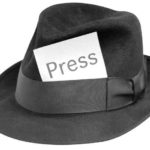 Originally Published in Crains Cleveland Business: November 16, 2014
Originally Published in Crains Cleveland Business: November 16, 2014
Earlier this year, Crain’s Cleveland Business formed an 11-member minority advisory board to provide objective, constructive input on minority-based issues for Crain’s. The Crain’s Business Diversity Council has met regularly since April. This is one in a series of profiles of its members.
Montrie Rucker Adams is a seasoned communications professional, yet she still has had her abilities called into question despite her qualifications.The president and chief visibility officer for Visibility Marketing Inc. of Beachwood said diversity and inclusion are issues that still need to be addressed. “No matter where you are, there’s this segregation that seems to naturally happen,” she said. “It’s still going on, it’s still happening. … It’s the 2000s and people are still running from each other.” Adams, who also has worked as director of publications for the Cleveland Metropolitan School District; as manager of marketing and public relations for the Health Museum of Cleveland; and as editor of Kaleidoscope magazine, is not one to sit back, however. Not only is she a member of the newly formed Crain’s Business Diversity Council, she’s been involved in a variety of community organizations and efforts, including the East End Neighborhood House and Continue Life Inc., a homeless shelter and transitional housing program for expecting and parenting young women.Adams also is passionate about her work with the Flora Stone Mather Center for Women at Case Western Reserve University.
“I am truly a women’s advocate,” she said. “When it comes to women, we’re still just treading water … sometimes just standing still.”
She even has made inclusion part of her everyday work at Visibility Marketing, implementing a practice of what she calls “Smart Inclusion.” It builds off the concept that innovation requires collaboration that crosses boundaries that we used to avoid or ignore.
Too often, she said, it is human nature for people to look for people like themselves — whether it’s in news coverage, the world of business or other circles.
“It’s the same old, same old,” she said. “That’s what happens when you don’t open your circle wide enough.”
It’s for that reason that Adams is encouraged by the Crain’s Diversity Council and her involvement with it. “It’s a positive step in the right direction,” she said.
Adams, a Northeast Ohio native who now lives is Richmond Heights, earned an undergraduate degree in business administration and psychology from Baldwin-Wallace College and her master’s degree in business administration (marketing/marketing management) from the University of North Carolina.
She and her husband, with whom she works at Visibility Marketing, have two children, ages 11 and 13.— Amy Ann Stoessel

 Pinterest is growing rapidly, with more monthly usage than Twitter, LinkedIn and Google+ combined. Time spent on the site averages 77 minutes, compared to Facebook’s 10 minutes.
Pinterest is growing rapidly, with more monthly usage than Twitter, LinkedIn and Google+ combined. Time spent on the site averages 77 minutes, compared to Facebook’s 10 minutes.





